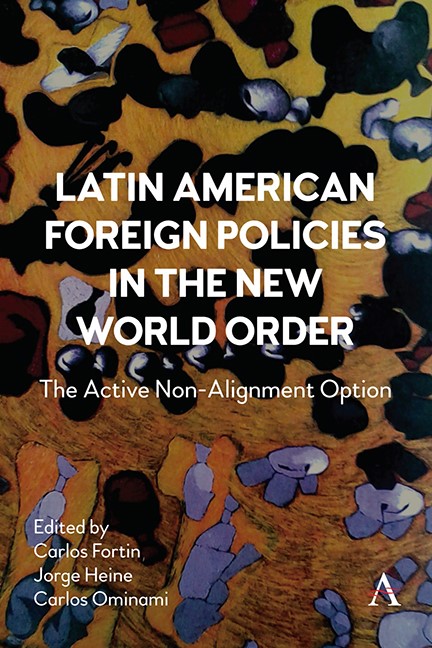Book contents
- Frontmatter
- Dedication
- Contents
- List of Tables and Figures
- Foreword
- Introduction: Active Non-Alignment (ANA) A Doctrine
- Part One The Emerging World Order
- Part Two Active Non-Alignment In The New Geopolitical Environment
- Part Three Active Non-Alignment in the New International Political Economy
- Part Four National Perspectives
- Conclusions—Implications of an Active Non-Alignment (ANA)
- Notes on Contributors
- Index
Chapter Thirteen - Active Non-Alignment and Global Economic Governance: Trade and Investment
Published online by Cambridge University Press: 15 November 2023
- Frontmatter
- Dedication
- Contents
- List of Tables and Figures
- Foreword
- Introduction: Active Non-Alignment (ANA) A Doctrine
- Part One The Emerging World Order
- Part Two Active Non-Alignment In The New Geopolitical Environment
- Part Three Active Non-Alignment in the New International Political Economy
- Part Four National Perspectives
- Conclusions—Implications of an Active Non-Alignment (ANA)
- Notes on Contributors
- Index
Summary
Introduction
A key dimension of the hegemonic conflict between the United States and China is the design of the rules, structures, and processes that govern the world economy.
The subject is, of course, not new. Already at the beginning of the 1980s, the governments of developed countries—particularly the United States—and multinational companies in those countries argued that it was necessary to reformulate global economic governance to bring it into line with globalization. The explicit objective was to establish international regimes that would provide a normative framework to facilitate and deepen globalization. The implicit objective was to consolidate this model of market capitalism and to promote the global expansion and penetration of multinational capital through the establishment of international disciplines.
In the field of international trade, the effort was initially successful. The Uruguay Round of trade negotiations concluded in 1994 with the creation of the World Trade Organization (WTO)—the successor to the General Agreement on Tariffs and Trade (GATT)—designed to be the nerve center of global trade governance.
Less successful was the effort in the area of international investment. As outlined further in this chapter, the constitutive instruments of the WTO agreed at the Marrakesh Conference in April 1994 included a basic agreement on trade-related investment measures; however, a proposal to fully incorporate this into the organization’s rules and ensure the free movement of foreign capital failed at the first Ministerial Conference in Singapore in 1996, largely due to opposition from developing countries.
However, the effort of governments and companies from developed countries to set up a unified international regime for global economic governance to reflect their interests continued at multilateral, plurilateral, regional, and bilateral levels. A brief account of that process provides a useful background for understanding today’s hegemonic conflict.
The Governance of Economic Globalization: The Central Issues
Debates and conflicts about the governance of economic globalization during the last four decades have revolved around four main questions: (1) Is a fundamental reform of global economic governance necessary, and should this be done by establishing a general normative framework for globalization? (2) Should this framework be extended to areas previously accepted as belonging to the sphere of national autonomy?
- Type
- Chapter
- Information
- Latin American Foreign Policies in the New World OrderThe Active Non-Alignment Option, pp. 167 - 182Publisher: Anthem PressPrint publication year: 2023



